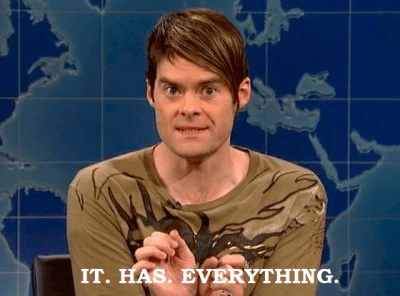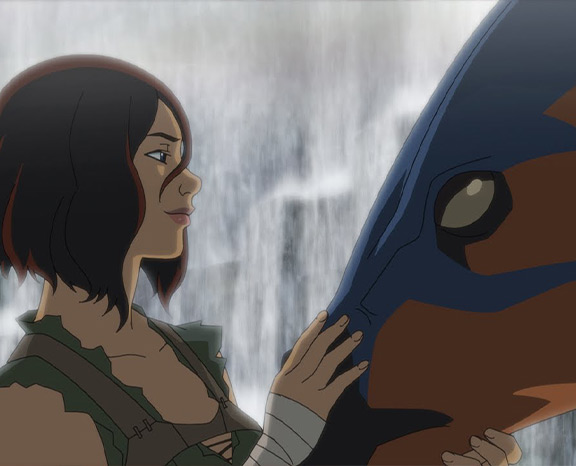Finding Your Voice: How to target press and influencers for your game
In today’s crowded gaming market, getting your indie game noticed feels like shouting into a hurricane. That’s where strategic media and influencer partnerships come in. They can be your megaphone, amplifying your game’s unique voice and reaching players who are genuinely excited about what you’ve created.
The team here at Reverb Communications has put together a few guidelines to help maximize your outreach efforts.
Identify what makes your game special.
Before you start pitching, it’s crucial to understand where your game fits in the market. Knowing your game’s niche will help you target the right media and influencers. Every game has something – a hook, a twist, or a unique feature set. Otherwise it wouldn’t exist! Identifying these Unique Selling Points (USPs) is foundational to your outreach strategy.
Think about what sets your game apart. Is it the art, gameplay mechanics, story, characters, late 90s aesthetic, or something else entirely? Look at successful games in your genre and see how they positioned themselves. Once you’ve pinpointed your USPs, craft clear, concise messages that highlight them. Bigfry Media does a fantastic job outlining the key features of Transience, the studio’s upcoming indie FPS title.

Create a media kit.
Think of your media kit as a trusty pocket knife. It’s a one-stop shop for everything a journalist or influencer needs to write a story or create content. Typically hosted on file sharing sites like Dropbox or Google Drive, a media kit at minimum should include:
- One-pager: A brief overview of the game, hitting the key points and USPs.
- Key Art and Screenshots: Visually showcase your game’s style and personality.
- Developer Background Info: This is your opportunity to showcase your bonafides. Introduce your studio and team, especially if you have relevant development or industry experience.
- Trailer (when available): Give them a taste of the sweet sweet action.
A well-prepared media kit shows you’re serious and professional, making a positive first impression. A great example is the press kit site from Rogue Games where you’ll find complete asset sets for each of their titles.
Research your targets.
Make a list of media outlets and creators that cover your game’s genre and cater to your target audience. This includes big names like IGN and Gamespot, as well as smaller, niche sites or blogs. Once you have your list, get to know the journalists who write for those outlets. Read their articles, watch their videos, and check out their social media. This will help you tailor your pitches and make genuine connections. Say you’re developing an MMO, here’s how your spreadsheet might look:

Identify the right influencers.
Influencers are like the cool kids in school – they have a following and people listen to them. Look for influencers who create content relevant to your game’s genre and have an engaged audience. Check their average viewership on Twitch or YouTube, and make sure they’re consistently posting new content. Tools like Social Blade and Lurkit can help you find potential influencers, but there’s no substitute for good old-fashioned research. Watch streams, browse channels, and see who’s talking about games like yours.
Build actual relationships.
Don’t just spam targets with generic pitches. Take the time to build real relationships. Follow them on social media, interact with their content, and show genuine interest in their work. When you finally reach out, personalize your pitch and reference something specific they’ve worked on. Remember, this is the start of a relationship, not a one-off transaction. Be flexible, offer value, and be patient.
Write a good (aka short) pitch.
Keep your pitches short, sweet, and to the point. Highlight your game’s USPs and explain why it’s a good fit for their audience. Reference something specific they’ve done that made you think of them. And don’t be afraid to show your personality – a little humor or a personal touch can go a long way. Here’s an example of an organic pitch that worked for Reverb’s influencer team recently (names have been changed):
Hey NAME,
We are working on a game called Legendary Hero which is a survival game where players must survive, craft, create and fight to achieve glory.
We know you promote chill vibes and good times so we think the next time you want to try a survival title you would enjoy playing Legendary Hero. It’s set to launch onto Steam on March 21st.
We will have keys available closer to launch. The game will have Twitch drops activated at release, and we also want to offer you 48-hour early access with no embargo so you can be one of the first people to get into the full game.
If you were interested in more information on Legendary Hero, I’ve included a link to the YouTube trailer below. Thanks for your time and let me know if you are interested in Legendary Hero.

Consider all options.
Don’t put all your eggs in one basket. Reach out to influencers on various platforms like YouTube, Twitch, and Twitter. Coordinate your messaging across these platforms for a consistent brand voice, but tailor the content to each platform’s strengths. For example, a Twitch stream might focus on beta gameplay, while a Twitter thread could highlight behind-the-scenes development.
A no is actually a yes.
Success isn’t just about getting a “yes” – it’s about learning and improving. Track your pitch responses, analyze which ones worked best, and adapt your strategy accordingly. If you’re not getting the results you want, don’t be discouraged. Use feedback from media and influencers to refine your pitch, messaging, or even your game itself. Happy Hunting!
Contact REVERB for a
free 15 minute consultation




